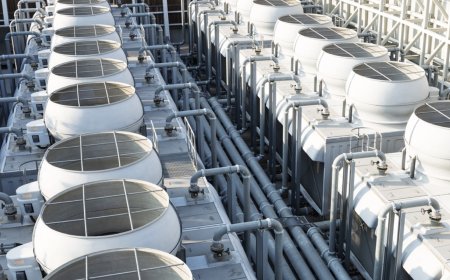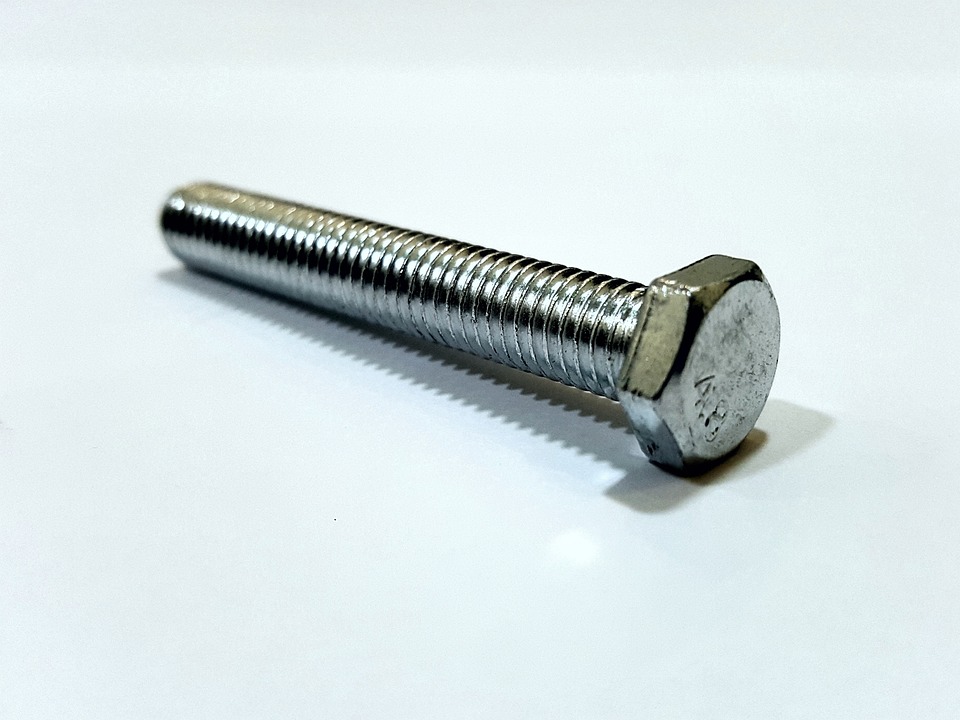Liquid Fertilizers: The Fast-Acting Solution for Healthier Crops and Higher Yields
The key to success with liquid fertilizers is knowledge—knowing your soil, your crop's needs, and how to balance synthetic and biological inputs for optimum performance. With the right tools and techniques, you can unlock greater yields, healthier plants, and a more resilient agricultural system.

In the dynamic world of agriculture, where time, efficiency, and productivity are critical, liquid fertilizers have emerged as a game-changing solution. As modern farmers shift towards more sustainable and efficient practices, the demand for products like biological fertilizer and fast-absorbing nutrient sources has skyrocketed. These solutions not only meet the urgent nutritional needs of crops but also enhance long-term soil health and yield.
Whether you're cultivating grains, vegetables, or fruits, incorporating liquid fertilizers can rapidly improve your crop performance. But how do they work, and why are they increasingly favored over traditional granular options?
Lets explore the science, application, and advantages of using liquid fertilizers in todays farming landscape.
What Are Liquid Fertilizers?
Liquid fertilizers are water-soluble solutions that deliver essential nutrients directly to plants in a form they can immediately absorb. Unlike granular or pellet-based fertilizers, these nutrients do not require time-consuming breakdown by microorganisms or environmental conditions to become plant-available.
There are various types of liquid fertilizers, including:
-
Nitrogen-rich solutions for leafy growth
-
Phosphorus-based formulas for strong root development
-
Potassium-enriched blends for flowering and fruiting
-
Micronutrient combinations including zinc, iron, manganese, and copper
These solutions can be applied through irrigation systems (fertigation), foliar sprays, or soil drenches, offering flexibility and efficiency to meet diverse crop requirements.
Why Liquid Fertilizers Are Gaining Popularity
Several key factors contribute to the increasing use of liquid fertilizers across farming operations:
1. Rapid Nutrient Absorption
One of the most compelling advantages is how quickly plants absorb nutrients from liquid fertilizers. Because these nutrients are already dissolved in water, plant roots and leaves can take them in immediately. This fast-acting effect is especially beneficial during critical growth phases such as flowering, fruiting, or post-transplant recovery.
2. Precision in Application
With liquid fertilizers, farmers can precisely control the nutrient dosage and distribution. This prevents nutrient wastage and reduces the risk of environmental runoff or leaching, particularly in sandy or loose soils.
3. Compatibility with Irrigation Systems
Modern farms often use drip or sprinkler irrigation systems. Liquid fertilizers are highly compatible with these systems, allowing for even and consistent delivery of nutrients directly to the root zone. This method, called fertigation, minimizes labor and maximizes efficiency.
4. Enhanced Plant Uptake During Stress Periods
In times of drought, high heat, or transplant shock, plant roots often struggle to extract nutrients from solid fertilizers. Liquid fertilizers bypass this challenge by delivering nutrients that are immediately usable, ensuring that the plant maintains growth and productivity during stress.
The Role of Biological Fertilizer in Sustainable Farming
As global agricultural practices move toward sustainability, biological fertilizer is becoming an essential tool. These fertilizers contain living microorganisms that help plants grow by improving nutrient availability, increasing disease resistance, and enhancing soil structure.
Common organisms in biological fertilizer products include:
-
Nitrogen-fixing bacteria like Rhizobium
-
Phosphate-solubilizing fungi like mycorrhizae
-
Potassium-mobilizing bacteria
-
Plant growth-promoting rhizobacteria (PGPR)
When used alongside liquid fertilizers, these biological agents enhance the long-term fertility of soil while still supporting immediate plant needs. For instance, applying liquid fertilizers with microbial inoculants can feed both the plant and the soil biology, leading to healthier crops and more resilient farming systems.
Best Practices for Using Liquid Fertilizers
To get the most from your investment in liquid fertilizers, its important to follow best practices tailored to your specific crop and soil conditions.
1. Soil and Tissue Testing
Before applying any nutrient, perform a soil test to identify deficiencies and imbalances. Similarly, tissue testing can tell you what nutrients your crop lacks during different growth stages. This allows for targeted application, reducing waste and optimizing growth.
2. Timing Matters
The effectiveness of liquid fertilizers depends heavily on when they are applied. For example:
-
Apply nitrogen during vegetative growth to promote leafy development.
-
Use phosphorus at transplanting or early root development.
-
Apply potassium during fruiting and flowering stages.
Split applicationswhere nutrients are given at multiple stagescan also increase nutrient efficiency.
3. Proper Mixing and Dilution
Always follow manufacturer guidelines when diluting and mixing liquid fertilizers. Concentrated solutions can burn roots or foliage if not applied properly. Using clean, pH-balanced water also ensures maximum nutrient stability and plant uptake.
4. Use with Caution in Hot Weather
Avoid foliar applications during the hottest parts of the day, as evaporation can lead to salt accumulation and leaf burn. Early morning or late afternoon is ideal for spraying.
Comparing Liquid vs. Granular Fertilizers
While both forms have their merits, each suits different farming needs. Heres a comparison:
|
Feature |
Liquid Fertilizers |
Granular Fertilizers |
|
Absorption Speed |
Fast (instant or within hours) |
Slow (days to weeks) |
|
Application Flexibility |
High (foliar, drip, soil, etc.) |
Limited (soil application only) |
|
Precision Control |
High |
Moderate |
|
Risk of Runoff |
Low with fertigation |
Higher, especially after rain |
|
Shelf Stability |
Shorter (sensitive to heat, moisture) |
Longer |
|
Cost |
Slightly higher upfront |
Often cheaper per unit nutrient |
Farmers often combine both typesusing liquid fertilizers during high-demand periods and granular forms for base nutrition.
Liquid Organic Fertilizers: The Natural Boost
In addition to synthetic options, many farmers are turning to organic liquid fertilizers, such as fish emulsion, seaweed extract, compost tea, and fermented plant juices. These natural products offer a balanced range of macro and micronutrients along with beneficial compounds like amino acids and enzymes.
Organic liquid fertilizers can be used as part of regenerative agriculture strategies, particularly when combined with biological fertilizer to build living, nutrient-rich soils that support long-term productivity.
Environmental Benefits of Liquid Fertilizers
The careful use of liquid fertilizers can lead to multiple environmental benefits:
-
Reduced nitrate leaching into groundwater
-
Lower greenhouse gas emissions due to precision application
-
Improved soil biology when combined with organic or biological additives
-
Decreased need for heavy machinery, reducing soil compaction
By integrating eco-friendly practices with efficient nutrition delivery, liquid solutions are at the forefront of sustainable intensification in agriculture.
Real-World Applications: Success Stories
In the Middle East, farmers growing leafy greens in arid conditions report increased yields and water efficiency when using fertigation with liquid fertilizers. In tropical regions, banana plantations benefit from foliar potassium sprays, leading to faster fruit development and fewer disease issues.
Even smallholder farmers using low-tech gravity-fed drip systems are achieving better results by switching from granular to liquid fertilizers, showing that scale and budget arent barriers to adoption.
Wrapping Up
Whether you're a commercial grower or a backyard enthusiast, liquid fertilizers offer unmatched advantages in speed, flexibility, and effectiveness. When thoughtfully integrated with biological fertilizer, they form a powerful synergy that enhances both immediate crop productivity and long-term soil health.
As agriculture continues to evolve, the shift toward smarter, more responsive nutrient management is undeniable. Liquid fertilizers embody this evolutiondelivering nutrients when and where they're needed most, helping farmers meet the growing demands of food production while preserving natural resources.
Use them wisely, and youre not just feeding your plantsyoure investing in the future of sustainable farming.





























